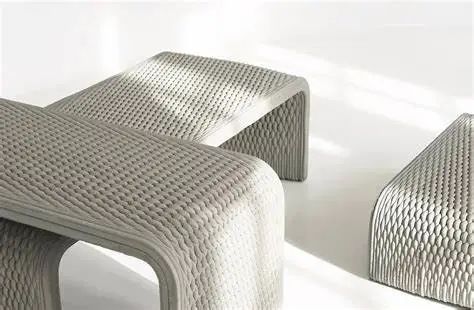Research on performance optimization of industrial solid waste 3D printing materials
Construction 3D printing (C3DP), as a green building concept, is highly valued by researchers and the construction industry, and has become increasingly popular in recent years. C3DP can save costs in materials, construction time, labor, etc., and avoid injury accidents. Qualified C3DP materials should have good flow, fast solidification after exiting the nozzle tip, and have high early strength, suitable viscosity, and low cost. However, when performing architectural 3D printing, the properties of the materials must be adjusted without affecting the overall performance of the printed components, which is a difficult problem. As we all know, with the rapid development of industrialization and urbanization in China, the increase of solid waste poses a serious threat to our environment and health, so choosing a reasonable way to deal with solid waste is of great significance. One of the effective ways to deal with solid waste is to apply it to the preparation of C3DP materials. This method also meets the requirements of the environmental protection industry and the green building industry. This method for preparing C3DP material from solid waste can realize the purpose of turning waste into treasure, and the prepared green building material has high performance.

(1) When the water-cement ratio is 0.28, when adding 0.05% lithium carbonate and 0.1% boric acid to the sulfur-aluminum-based high-active material, the properties of the material can be adjusted, such as fluidity (180.7mm), solidification time (42min) and compressive strength (the compressive strength of 2h and 28d are 19.2MPa and 97.5MPa, respectively). Coordinated tuning of these three properties is achieved by cross-changing the ratio of boric acid as retarder and flow enhancer to lithium carbonate as accelerator. The use of paraffin as a phase change material (PCM) can also optimize performance, for example, at a water-cement ratio of 0.19, PCM addition rate of 10%, flow properties up to 185mm, initial setting time up to 45min, and curing at 700C The compressive strengths at 2h and 28d were 8MPa and 83MPa, respectively.
(2) In order to evaluate the optimized material, the actual performance of the optimized material has been checked by successfully building 3D printed components using different types of 3D printing systems at different locations. The layers that successfully built the 3D printed components were 8mm to 20mm thick, 20mm to 50mm wide, 100mm to 600mm long, and just under 300mm high. In addition, a total of 18 layers of components were successfully constructed using the optimized sulfur-aluminum-based highly active material, and the time required to complete one layer of the component was approximately 60 to 90 seconds. Additionally, the 3D printed components have smooth and defect-free surfaces.
(3) The solid waste-based sulfur-aluminum-based high-active material prepared by us is economical, and the calculated cost is about 200~300 yuan/ton, while the cost of ordinary Portland cement is about 400~500 yuan/ton.
(4) The overall design idea of the architectural 3D printing system is given. The complete printing system is divided into three main parts: material mixing system, material conveying system and material extrusion system. The three can be combined into a complete and successfully printable component 3D printing system.
This research provides a new way for the recycling of solid waste and the development of green building materials and technologies.
